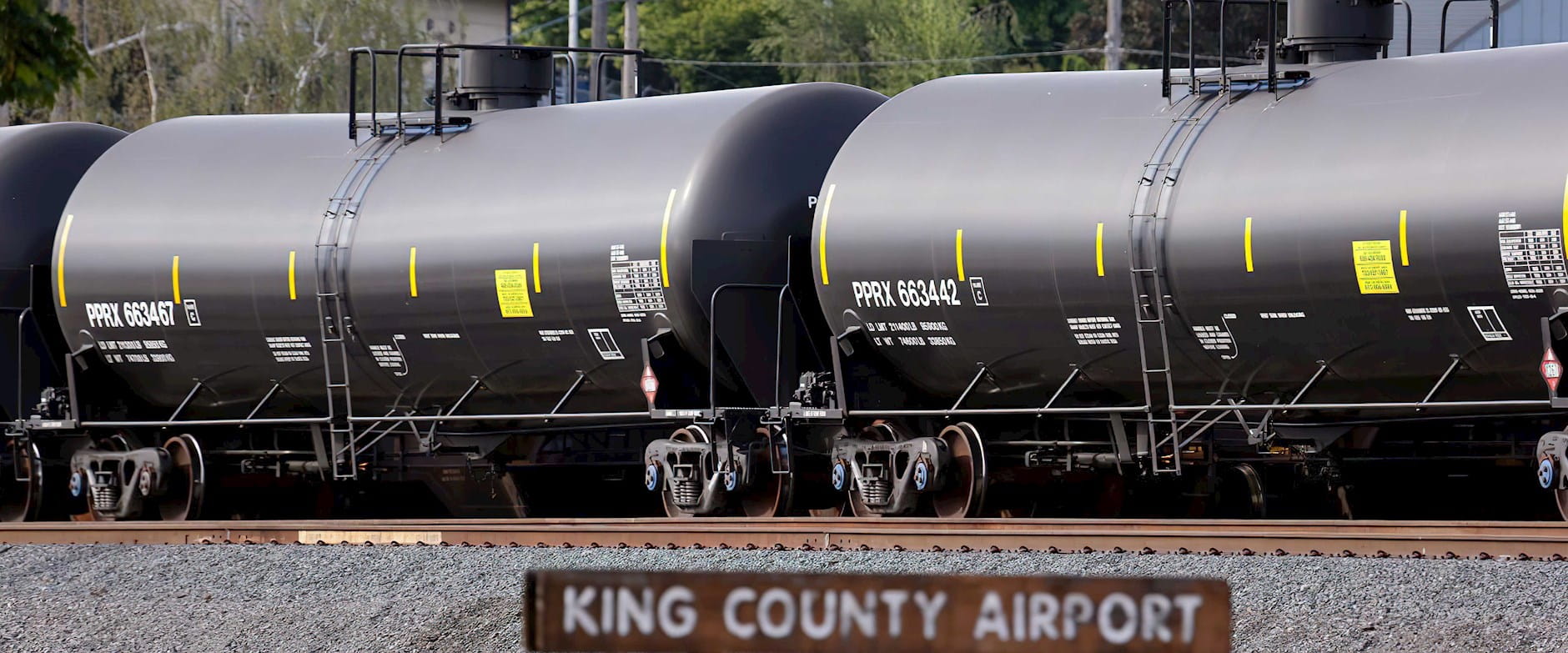The fracking-driven surge in crude-oil production this century has forced two developments in the US transportation infrastructure: a boom in pipeline construction as well as a boom in rail shipments of crude while pipelines are being developed. Rail transportation peaked at almost 1 million barrels a day between 2010 and 2014, representing a record 10 percent of American crude production.
But as pipeline developers sought long-term contracts from oil shippers, a curious thing happened. The availability of rail as a transport option reduced demand for pipeline capacity, find Chicago Booth’s Thomas Covert and University of Chicago Harris School of Public Policy’s Ryan Kellogg, even though shipping by rail costs more and causes more environmental damage. They argue that “crude-by-rail may be an attractive transportation option in spite of its higher costs.”
The researchers focused on the Bakken shale fields of North Dakota, where fracking began to unlock vast amounts of oil in the mid-2000s. Producers turned to rail tanker cars to get the crude to refiners as production levels exceeded existing pipeline capacity. Meanwhile, a consortium of companies began signing up customers for the proposed $3.78 billion, 1,172-mile Dakota Access Pipeline. They obtained enough long-term commitments from crude-oil shippers to build the pipeline in June 2014, though protests and legal challenges delayed completion until 2017.
Building a model using data on market conditions as of June 2014, the researchers find that the capacity of rail transit makes it more than a stopgap and can erode incentives to invest in pipelines.
Why shipping oil by rail can be more expensive, less reliable—and still attractive
“Because rail infrastructure already exists between the upper Midwest and nearly every major refining center in the country, crude-by-rail allows shippers the flexibility to decide when and where to ship crude” on the basis of changes in prices, write Covert and Kellogg.
Their research suggests that rail’s flexibility reduced demand for pipeline capacity. Promoters obtained enough commitments to support building a pipeline to carry only 520,000 barrels a day, or roughly a third of the projected production capacity of the Bakken fields. The researchers calculate that for every $1-a-barrel increase in the cost of rail transportation, demand for pipeline capacity would have risen by between 32,000 and 75,000 barrels a day, or 6–14 percent. That is based on data from December 2016, the latest month for which they have data, when a $1 increase would have amounted to a 9 percent rail cost spike.
The findings highlight the limitations of pipeline projects. When refineries are paying high prices for oil, pipeline shippers do well. But when prices and production decline, shippers still have to pay for the pipeline capacity they reserved, whether they’re using it or not. With rail, shippers can set up shorter contracts and pay only when they’re actually moving oil, and they can send the oil to many more refining locations.
Environmental protesters fought hard against the Dakota Access and Keystone XL Pipelines, but the researchers note that pipelines have been found to be less harmful to the environment than trains. Emissions of greenhouse gases by locomotives hauling Bakken oil to the east coast may cause environmental damage averaging $2.02 a barrel, the researchers say, citing research by Carnegie Mellon’s Karen Clay, Akshaya Jha, and Nicholas Muller and University of Pittsburgh’s Randall Walsh, adding that this is nearly twice the pollution damage caused by pipeline transportation. Trains are also subject to the risk of spills and explosions. For example, a 2013 freight-train derailment destroyed much of the downtown area in Lac-Mégantic, in Quebec, Canada, and left 47 people dead.
The researchers argue that their findings should inform policy makers on how emissions regulations could address environmental damage by raising the cost of rail shipping and altering the incentives for investing in pipelines. Beyond crude oil, their model could also guide decisions about technological projects that must weigh large, up-front investments against variable-cost options, they write. City planners, for example, often choose whether to make significant investments in light-rail systems that offer cheap per-person costs or more-flexible bus systems that would save up front but pass higher costs on to riders.
- Karen Clay, Akshaya Jha, Nicholas Muller, and Randall Walsh, “The External Costs of Transporting Petroleum Products by Pipelines and Rail: Evidence from Shipments of Crude Oil from North Dakota,” Working paper, September 2017.
- Thomas Covert and Ryan Kellogg, “Crude by Rail, Option Value, and Pipeline Investment,” NBER working paper, September 2017.
Your Privacy
We want to demonstrate our commitment to your privacy. Please review Chicago Booth's privacy notice, which provides information explaining how and why we collect particular information when you visit our website.
